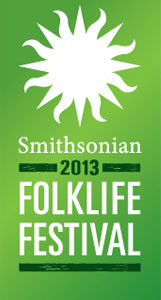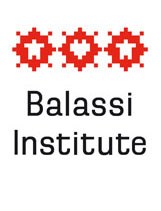by The Academic Workshop of Hungarian Folk Music Research
One of the foundations of the research centre was built on the Academy’s commission to Béla Bartók and Zoltán Kodály to systematize and publish the Hungarian folksongs (1934-1940). Their folk music collections constitute the basis of the gradually expanding stock of tapes and transcriptions whose archiving, enlarging and systematizing have remained the decisive duty. In 1933, the leaders of the Academy contracted Kodály and Bartók to prepare a collection of Hungarian folksongs covering the entire Hungarian-speaking territory. Bartók’s job was to prepare the folksong collection for publication, Kodály’s was to explore comparative sources of folk music materials in libraries and archives.
Bartók System
Bartók revised the material recorded by the phonograph and arranged the collection according to the system he elaborated in his book Hungarian Folk Song in 1924. He had Polish, Rhutenian, Bulgarian, Serbo-Croatian publications copied. “I work 10 hours a day, on folk music material only, but I should work 20 hours to make some progress. I should like so much to finish this work before the global disaster looming large hits! At the current pace, it will take me several more years.” He pondered much about the questions of systematization, the arrangement of over ten thousand items within a single system, the need for the system to express the special characteristics of the material and to include tune variants as close together as possible. In early October 1940, on the eve of his emigration, he gave over the collection to Kodály. This numbered collection of 13,500 items closed in 1939 is called the Bartók System.
Kodály System
What Kodály had undertaken – the elaboration of 19th century printed and manuscript sources – was still unfinished when Bartók left. Therefore, the Bartók System could not include those tunes. For this task Kodály had gone through the music collections of Széchényi Library, the Music Academy, the Hungarian Academy of Sciences and the Hungarian State Opera. He had studied over six hundred sources. Kodály later arranged the songs, copied from these sources in his own system. Kodály classified the folk song material by the line ending notes. Unlike the Bartók System, the Kodály System was not a closed entity, hence all new collections were arranged in it until 1958. Then the System contained some 28 thousand items.
Bartók and Kodály made their transcriptions in several copies, exchanging them and both forming their collections as they deemed it best.
Járdányi System
In 1958 a group of music scholars headed by Pál Járdányi joined forces to work out new principles for the systematization of the by then immense strophic folksong stock to be used as guidelines for the volumes of folksong-types within Corpus Musicae Popularis Hungaricae. (Earlier, Járdányi carried out the musical arrangement of the tunes of children’s games and the match-making songs, and his contribution was the musical order of the laments as well.) Járdányi classified the stylistic traits principally on the basis of the melodic contour of strophic folksongs and the cross-references of the height of each line. His new system is based on the two principal layers of Hungarian folk music, represented by old- and new-style tunes. The former is characterized primarily by the first tune-section beginning higher than the closing one; tunes of the new style, on the other hand, have identical first and last sections. (The tunes where the first melodic section is lower than the last are not typical of Hungarian folk music, but are borrowed from art music, or imported from foreign areas.)
The first version of the Járdányi System was completed in 1960 and used in the two volumes of Magyar Népdaltípusok [Types of Hungarian folksongs]. It was elaborated on the basis of some 60,000 tunes. In the following years the number of tunes rose considerably, which prompted Járdányi to develop his system further. He presented the modified system of nearly 100,000 tunes at the Pozsony [Bratislava] conference of the Study Group of Analysis and Systematization of IFMC in September 1965.
Stylistic order (Szendrei—Dobszay)
In 1975-78 Janka Szendrei and László Dobszay worked out a new system. The so-called stylistic order abandons systematization by strictly musical principles and arrives “at a classification that heeds many different factors and the relationship between them (particularly if one adds an analysis that extends to the origin, the functional and textual components, and the comparative melodic material). The blocks of styles are the following: 1. descending tunes with a quintal-shift structure or other pentatonic melodies, or those derivable from pentatony. Related to this are: l.b. group of descending “shepherd’s songs”, and as an appendix, 1.c. descending, minor, pseudo-folk composed songs. – 2. major, descending tunes with a compass of an octave. – 3. psalmodic and – 4. “lament” style tunes. – 5. The “Rákóczi melodic sphere”, with 16th to 18th century Phrygian melodies as an appendix to it. – 6. bagpipe tunes, swineherd’s dance style, related to this: 6.b. tunes with a “minor quintal-shift structure” and 6.c. tunes descending from the octave, with an AA first half. – 7. tunes with narrow compass (pentachord and hexachord), old style. – 8. tunes with narrow compass, new style, and 8.b. plagal types in a similar style. – 9. wide-compass, ascending tunes. 10. the “new-style” Hungarian folksong.”
REFERENCE
Anthology of Hungarian Folk Music — Magyar Népzenei Antológia. Budapest
Bartók, Complete = Bartók Béla: Hungarian Folk Songs. Complete Collection. Eds. Sándor Kovács, Ferenc Sebő. Budapest, 1993.
Catalogue = Catalogue of Hungarian Folksong Types. — Arranged According to Styles. I. Introduction and Chapters 2 and 4 by László Dobszay, Chapters 1 and 3 by Janka Szendrei. Institute for Musicology of the Hungarian Academy of Sciences. Budapest, 1992.
CMPH = Corpus Musicae Popularis Hungaricae — A Magyar Népzene Tára (established by Béla Bartók and Zoltán Kodály), Budapest.
I. Gyermekjátékok [Children’s Games]. Ed. by György Kerényi. Akadémiai Kiadó, 1951., 1957.
II. Jeles napok [Calendar Days]. Ed. by György Kerényi. Akadémiai Kiadó, 1953.
IIIA/B Lakodalom [Wedding]. Ed. by Lajos Kiss. Akadémiai Kiadó, 1955/1956.
IV. Párosítók [Coupling Songs]. Ed. by György Kerényi. Akadémiai Kiadó, 1959.
V. Siratók — Laments. Eds. Lajos Kiss, Benjamin Rajeczky. Akadémiai Kiadó, 1966.
VI. Népdaltípusok 1. — Types of Folksongs 1. Eds. Pál Járdányi, Imre Olsvai. Akadémiai Kiadó, 1973.
VII. Népdaltípusok 2. — Types of Folksongs 2. Járdányi Pál rendszerében szerkesztette — in the system of Pál Járdányi ed. by Imre Olsvai. Akadémiai Kiadó, 1987.
VIIIA/B. Népdaltípusok 3. — Types of Folksongs 3. Ed. by Lajos Vargyas. Akadémiai Kiadó — Balassi Kiadó, 1992.
IX. Népdaltípusok 4. — Types of Folksongs 4. Ed. by Mária Domokos. Chief Collaborator Imre Olsvai. Balassi Kiadó, 1995.
X. Népdaltípusok 5. — Types of Folksongs 5. Ed. by Katalin Paksa. Chief Collaborator Imre Olsvai. Balassi Kiadó, 1997.






